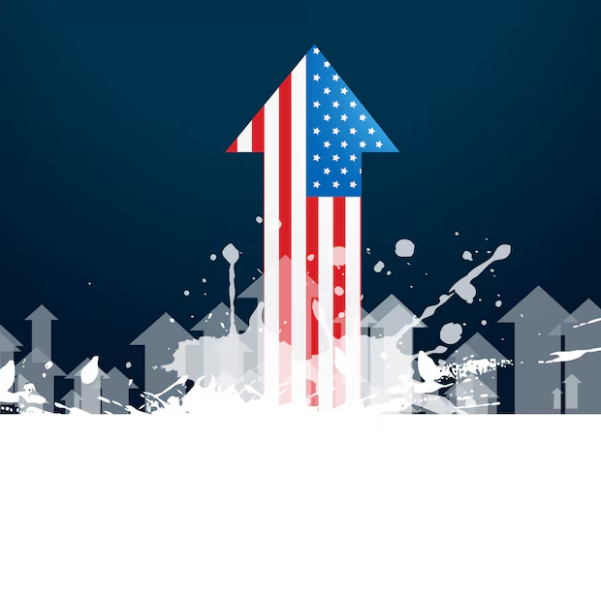In the ever-evolving landscape of the United States’ financial sector, loans play a pivotal role in shaping the economic well-being of individuals, businesses, and the broader economy. They represent a dynamic interplay of challenges and opportunities, reflecting the diverse needs and aspirations of borrowers. Loans serve as critical financial tools, enabling people to purchase homes, pursue higher education, start businesses, or cover unforeseen expenses.
At the same time, navigating the complexities of loan options, interest rates, and repayment terms requires a solid understanding of the financial market. Borrowers must balance their immediate financial goals with long-term implications, while lenders evaluate risks and opportunities to ensure sustainable growth.
Challenges and opportunities

Loans as financial instruments
Loans form the bedrock of financial transactions in the United States, serving as indispensable instruments for individuals, businesses, and the broader economy. They provide a vital mechanism for bridging the gap between immediate financial needs and long-term aspirations. From personal loans addressing urgent expenses, such as medical bills or debt consolidation, to mortgages enabling homeownership and fostering generational wealth, the loan market in the U.S. is both diverse and multifaceted.
For businesses, loans are crucial for expansion, innovation, and day-to-day operations, supporting economic growth and job creation. However, navigating the array of loan options, terms, and interest rates can be daunting, requiring careful financial planning and literacy. Understanding the nuances of the U.S. loan market is essential for leveraging these financial tools effectively, ensuring borrowers can achieve their goals while maintaining financial stability in an ever-evolving economic landscape.
Challenges in loan accessibility
Loans are widely available, yet accessibility remains a significant challenge for certain groups. The complexities of credit scoring systems, combined with stringent eligibility requirements, often create barriers for individuals seeking financial assistance. Factors such as past financial decisions, limited credit history, and less-than-perfect credit scores can make securing loans difficult.
These obstacles disproportionately impact young individuals, first-time borrowers, or those recovering from financial setbacks. The issue highlights the need for more inclusive lending practices that consider alternative methods of evaluating creditworthiness. Expanding access to loans could empower more people to achieve financial stability and meet their personal and professional goals.
Opportunities for innovation
Acknowledging these challenges has spurred significant innovation in the financial sector, paving the way for more inclusive solutions. Fintech companies have become pivotal players in addressing accessibility issues, introducing alternative lending models that challenge traditional methods. By leveraging advanced technology, these companies have streamlined loan processes, making them more efficient and user-friendly.
Online lenders, peer-to-peer lending platforms, and mobile-based loan services are transforming the loan landscape, offering flexible options tailored to diverse needs. These innovations hold the potential to break down barriers, enabling individuals with limited credit history or suboptimal scores to access financial support and achieve their goals.
Personalized loan products
The growing demand for personalized financial solutions has driven the development of tailored loan products designed to meet diverse individual needs. Traditional one-size-fits-all lending models are gradually being replaced by more flexible and adaptable approaches that take into account a borrower’s unique circumstances. Lenders are now leveraging data analytics and advanced technologies to offer customized loan options, catering to specific financial goals, income levels, and repayment capacities.
This shift reflects a broader trend in the financial sector toward prioritizing customer-centric solutions, empowering individuals to access loans that better align with their personal and professional aspirations, fostering financial inclusion and stability.
Integration of technology
Technology is revolutionizing the loan industry by transforming how loans are originated, processed, and serviced. The integration of artificial intelligence (AI) and machine learning (ML) is playing a crucial role in enhancing credit risk assessment, enabling faster and more accurate evaluations of a borrower’s financial profile. This advancement not only accelerates loan approvals but also reduces biases inherent in traditional methods.
Meanwhile, blockchain technology is being explored for its potential to improve transparency and security in loan transactions. By providing an immutable and decentralized ledger, blockchain can mitigate fraud risks and streamline processes, paving the way for a more reliable financial ecosystem.
Sustainable and ethical financing
As societal awareness about sustainability and ethical practices continues to grow, there is an increasing demand for financing options that align with these values. Borrowers are seeking lenders who prioritize environmental, social, and governance (ESG) considerations in their operations. In response, financial institutions are integrating sustainable practices into their lending strategies, offering products that support green initiatives, social impact projects, and ethical business models.
This shift not only meets consumer expectations but also fosters a more responsible financial ecosystem. By aligning financial services with sustainability goals, lenders are contributing to long-term positive change while driving innovation and building trust with socially conscious borrowers.
Digital transformation in loan application processes
The digital transformation wave has significantly impacted how individuals apply for loans. Online application processes have become commonplace, offering convenience and efficiency.
- Streamlining documentation through digital uploads.
- Automated verification processes reducing turnaround time.
- The role of artificial intelligence in assessing loan applications.
The rise of peer-to-peer lending platforms
Peer-to-peer (P2P) lending platforms have gained popularity as alternative lending sources. Understanding the dynamics of this evolving sector provides insights into new borrowing and investment opportunities.
- Direct lending between individuals without traditional financial intermediaries.
- Diversification of investment portfolios through P2P lending.
- Regulatory considerations and risks associated with this lending model.
Impact of economic trends on loan interest rates
Economic fluctuations have a direct impact on interest rates, influencing the cost of borrowing. Analyzing these trends helps borrowers make informed decisions regarding the timing of loan applications.
- Interest rate movements in response to inflation and economic indicators.
- Strategies for borrowers during periods of rising or falling interest rates.
- Long-term considerations for fixed-rate versus variable-rate loans.
In conclusion, the U.S. loan landscape presents both challenges and opportunities, fostering a dynamic environment for borrowers and lenders alike. As the financial sector evolves, understanding the current trends, embracing innovative solutions, and staying informed about changes in lending practices are essential for success. Borrowers can benefit from exploring new financial technologies and tailored loan options, while lenders can gain by adopting inclusive and sustainable practices.
By prioritizing responsible borrowing and lending, individuals and institutions can effectively navigate the complexities of the loan market, contributing to a more accessible, innovative, and equitable financial ecosystem in the United States.






